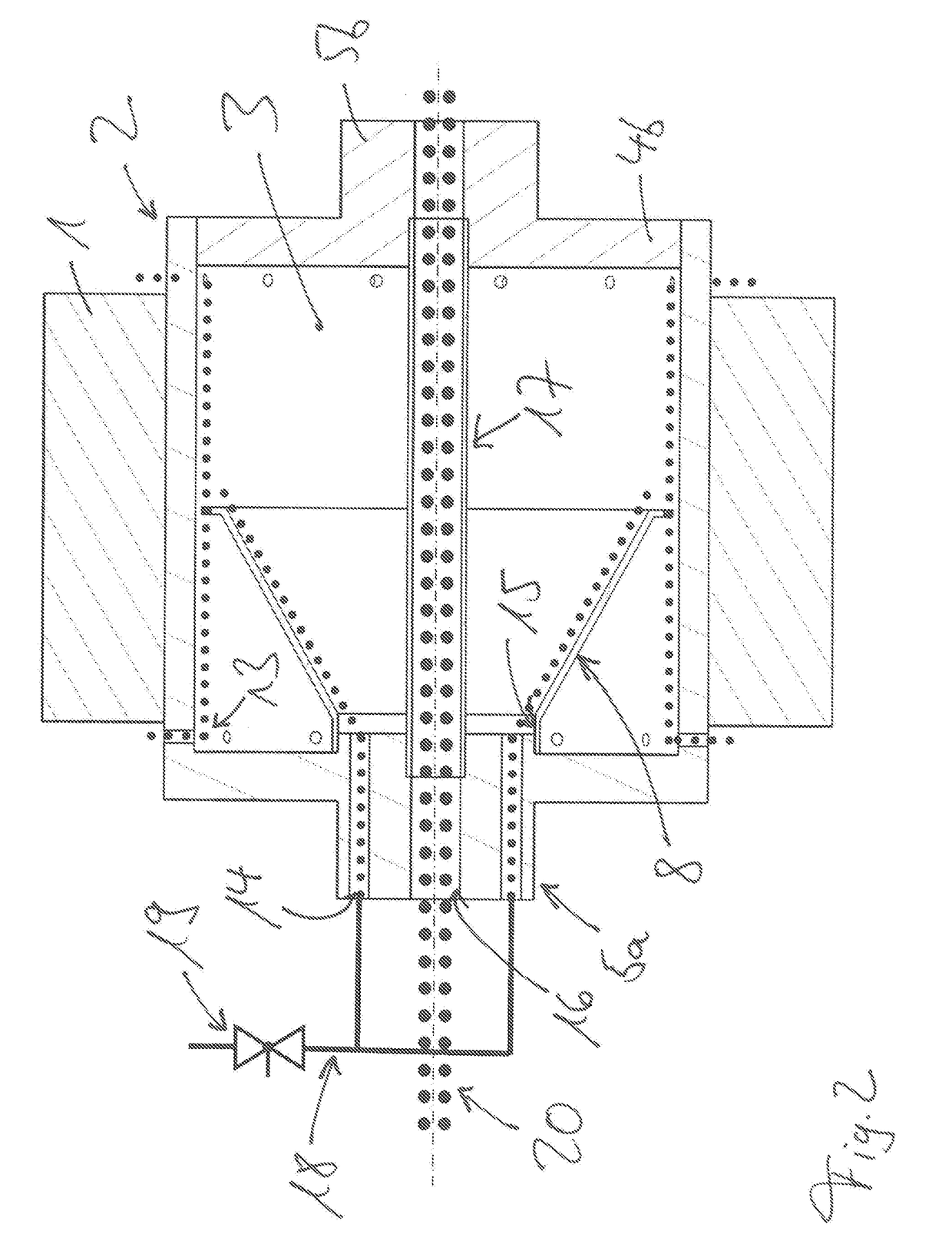Oil distribution element
a technology of distribution element and oil, which is applied in the direction of electrical apparatus, dynamo-electric machines, cooling/ventilation arrangement, etc., can solve the problems of large pressure loss, difficult implementation of these concepts, and the need for coolant pumps, so as to reduce the amount of mass to be moved rotationally, light design, and increase the surface area available
- Summary
- Abstract
- Description
- Claims
- Application Information
AI Technical Summary
Benefits of technology
Problems solved by technology
Method used
Image
Examples
Embodiment Construction
[0026]Embodiments of the rotor equipped according to the invention will be explained in greater detail below, using the figures. These show:
[0027]FIG. 1 a rotor-integrated cooling system, and
[0028]FIG. 2 a rotor-integrated cooling system with separate media transport.
[0029]In FIG. 1, first a rotor for an electrical machine, particularly for an asynchronous motor or a permanently excited synchronous machine, is shown, which has a hollow rotor shaft equipped with bundles of laminations 1. The hollow rotor shaft is formed by a cylinder barrel 2, which encloses a shaft cavity 3 and is closed off, on both sides, by face flanges 4. In the present case, the one face flange 4a is formed on the cylinder barrel 2, while the other face flange 4b is fitted into the cylinder barrel 2. A shaft journal 5 is provided at both face flanges 4, in each instance, which journal is formed on or attached as a separate component. In one of the shaft journals 5, an inlet 6 is provided, by way of which a cool...
PUM
 Login to View More
Login to View More Abstract
Description
Claims
Application Information
 Login to View More
Login to View More - R&D
- Intellectual Property
- Life Sciences
- Materials
- Tech Scout
- Unparalleled Data Quality
- Higher Quality Content
- 60% Fewer Hallucinations
Browse by: Latest US Patents, China's latest patents, Technical Efficacy Thesaurus, Application Domain, Technology Topic, Popular Technical Reports.
© 2025 PatSnap. All rights reserved.Legal|Privacy policy|Modern Slavery Act Transparency Statement|Sitemap|About US| Contact US: help@patsnap.com



